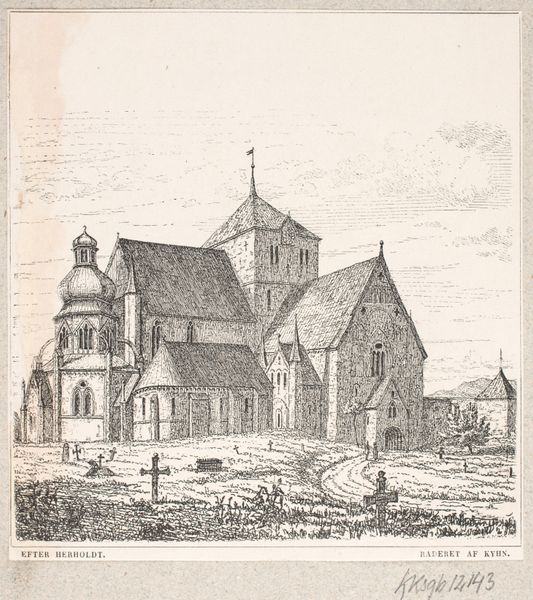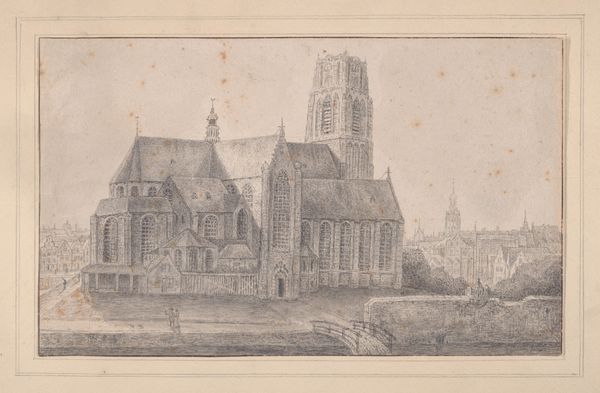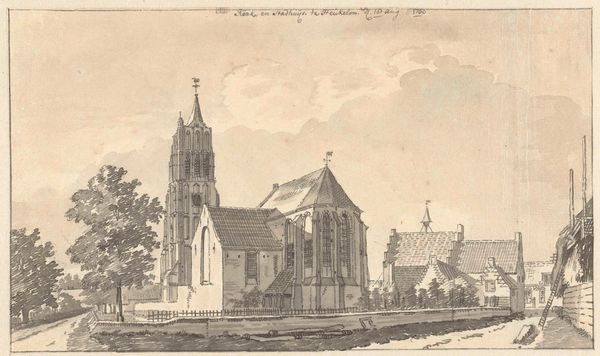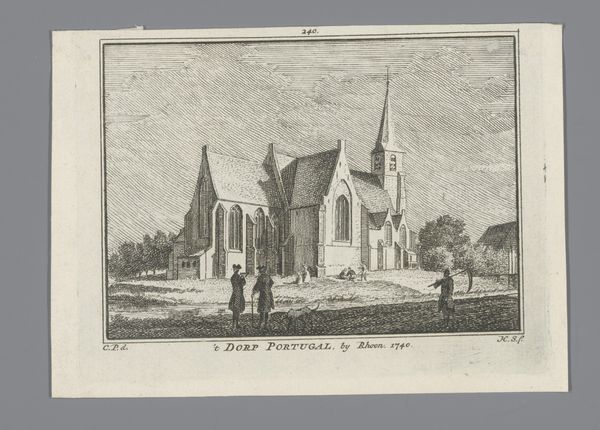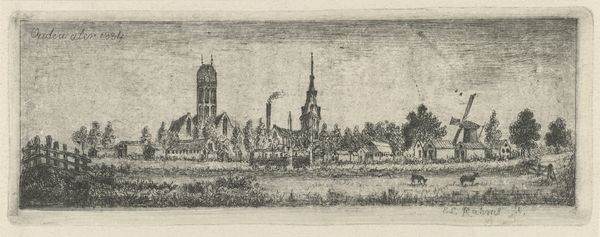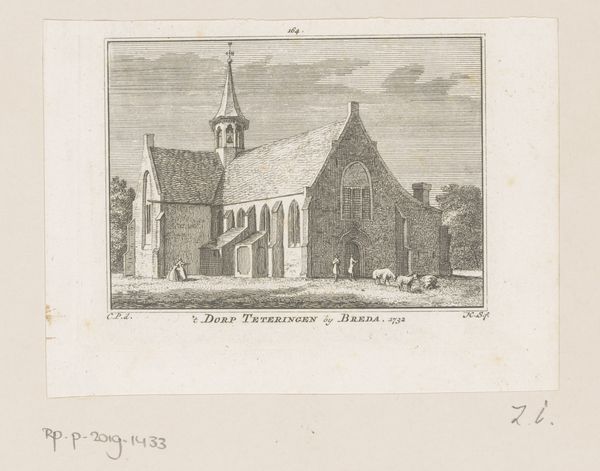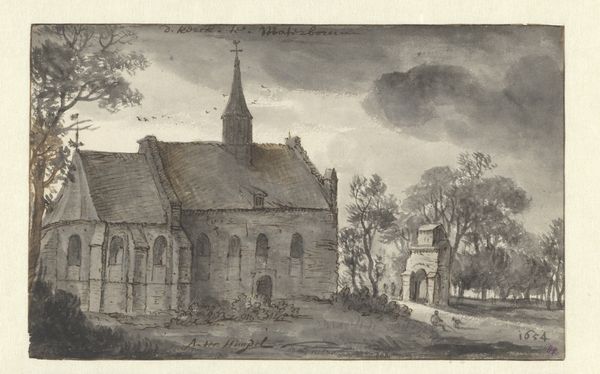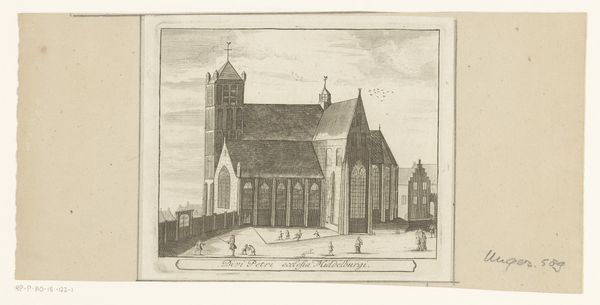
Fotoreproductie van een tekening van een gezicht op de Buurkerk te Utrecht door Anthonie Waterloo 1880 - 1907
0:00
0:00
anonymous
Rijksmuseum
drawing, paper, pencil
#
pencil drawn
#
drawing
#
landscape
#
paper
#
geometric
#
pencil
#
cityscape
#
paper medium
Dimensions: height 294 mm, width 375 mm
Copyright: Rijks Museum: Open Domain
Curator: Here we have a reproduction of a drawing by Anthonie Waterloo depicting the Buurkerk in Utrecht, created sometime between 1880 and 1907. It's rendered in pencil on paper. Editor: My first impression? Dreamy, almost ghostly. The muted tones give it an ethereal quality, like a memory fading at the edges. The soft pencil lines really capture the essence of the cityscape. Curator: Absolutely, that subtle quality invites us to contemplate the changing urban landscape. The Buurkerk itself, this imposing structure, anchors the composition but is juxtaposed with more temporal structures, dwellings even some tiny figures in the foreground that emphasizes the everyday lives unfolding in its shadow. What does it whisper to us about the social fabric of the time? Editor: That position as an anchor resonates deeply. Religious architecture in the 19th century signified so much more than just spiritual solace. They served as sites for the intersection of state power, class divisions, and local identity. Look at how the drawing emphasizes its geometric precision against the almost hazy skyline. I wonder what Waterloo intended with this stark contrast. Was it commentary on progress and tradition? Curator: Or perhaps about faith and change. See the almost playful way he renders the roofs of the surrounding buildings? Like a sea of tiny geometric shapes mirroring the more imposing shape of the church itself. I like to think it mirrors his vision as he created the sketch and brings something human to the monument. Editor: A fascinating point! This invites us to see art history not just as a linear march of styles, but as an intersectional space where gender, class, and identity inform the aesthetic choices. Even seemingly simple landscape drawings like this one speak volumes when we listen closely. Curator: Ultimately, whether we see commentary or artistic expression, Waterloo's rendering of the Buurkerk invites us to pause and to look beneath the stones of Utrecht’s city. It becomes less about what it *is* and more about what it *feels* like. Editor: Precisely! A conversation, a document, and, as always, an unfolding set of questions that connects the past to the present in perpetually fascinating ways.
Comments
No comments
Be the first to comment and join the conversation on the ultimate creative platform.



